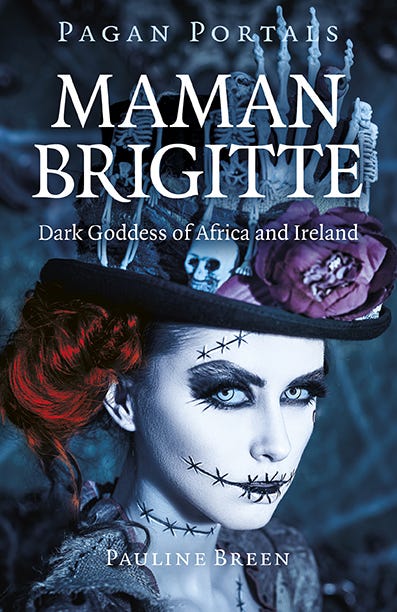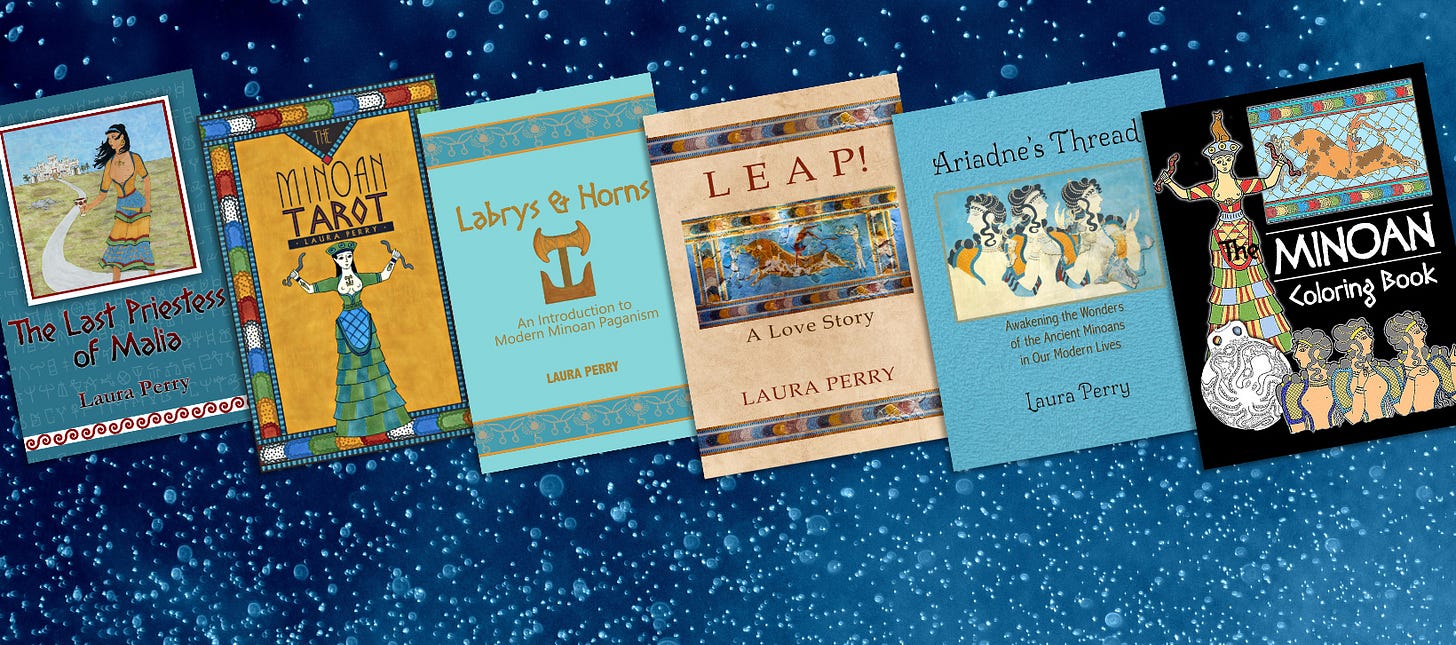Let me begin by stating that I’m socioculturally white and have no direct experience in any of the African syncretic traditions in the Americas. I do have a number of friends who practice Santería, New Orleans Voodoo, and other similar traditions, and I’ve learned some basics from them in both casual conversation and formal workshops. So I’m not entirely unfamiliar with the subject. But I’m not initiated into any of those traditions, and I don’t practice any of them.
I read this book as an outsider, which made it all the more interesting since the author herself is also an outsider, an Irish woman and dedicated priestess of the Irish goddess Brigid. Pauline Breen is a priestess of Brigid whose specialty — her assignment from the goddess, you might say — is to track Brigid’s journeys outside her native Ireland and discover the many places this fascinating goddess has gone.
Breen encountered Maman Brigitte during her research about Brigid and felt the goddess’s push to investigate this Lwa and learn more about her. She even felt compelled to cross the Atlantic to visit New Orleans during her exploration into Maman Brigitte, traveling all the way there from Ireland.
The author makes it clear from the beginning of the book that she’s not writing as an initiate or practitioner of any of the African syncretic traditions, but as a priestess of Brigid who felt a need to find out what she safely and respectfully could about Maman Brigitte as an outsider. She is humble and honest in sharing her journey of exploration about this fascinating Lwa, and she doesn’t pretend to share secrets from any of the initiatory traditions involving Maman Brigitte.
Breen delves deep into the history of Haitian Vodou and New Orleans Voodoo to provide the necessary background for understanding the emergence of Maman Brigitte, who appears to be a syncretism of the Irish goddess/saint Brigid and the Yoruba Orisha Oya.
The African enslaved people and the Irish indentured servants each brought their own spiritual traditions to the Americas, beginning in Haiti, where they merged and blended both before and after emancipation. The history of these traditions is fraught with the trauma of slavery and oppression on the part of the African people. In the face of those forces, the people forged a spirituality of strength and resistance.
From this difficult background emerged Maman Brigitte, a Lwa uniquely described as having light skin and red hair. At first she appears to be very different in character from the goddess Brigid, who is often (not entirely accurately) described in a sort of sweetness-and-light kind of way. But it turns out that, despite their differences, the two have an awful lot in common. Among other things, they’re both fierce protectors of their people, especially women and children, and no strangers to the world of the dead.
Something I learned from other reading, after finishing this book, is that the Irish women who emigrated to New Orleans often married men of color, their children adding to the mixed-race population that had, and still has, its own subculture within the city. So the intertwining of these two peoples continued past Haiti and into the coastal mainland. It’s a fascinating, beautiful, and often heart-wrenching cultural tapestry.
My only real criticism of the book is that the title and the text repeatedly refer to Maman Brigitte as a goddess when she is, in fact, a Lwa. There’s a distinction between the two, and it’s not accurate to describe Maman Brigitte as a goddess, even if she “evolved” from two other beings, one of whom is a goddess. Language matters, and I wish people would be a little more careful about it, as a matter of respect for the cultures involved. But I suspect that using the term “goddess” in the title will get the book into the hands of more readers, especially those who don’t know what the word “Lwa” means. If there is a second edition, it might be helpful to include some discussion of what the two terms mean and how they should be used.
I do recommend this book, even though it’s written by an outsider, or perhaps because it’s written by an outsider, which makes it a good starting point for outsiders — and there are so very many of us. This book relates the story of a European woman (Breen is Irish, not American) on a journey of discovery about a deeply faceted Lwa, led in that direction by a European deity, and as such is an interesting look at that interaction. The history section of the book goes into far greater detail than I’ve seen elsewhere about Maman Brigitte and gives the reader a look into the complex, often dark societal forces that power the depths of African syncretic religion in the Americas.
That said, once you’ve read this book and if you’re still interested in the subject, you should move on to read works by writers of color for whom these traditions are part of their culture of origin, such as Lilith Dorsey and Sen Elias — people who aren’t outsiders.
I’m not planning to paywall my Substack, but if my work has meaning and value for you, please consider dropping a little something in my tip jar at Ko-Fi. Thank you!
You can find my books here and my art here and here. I do apologize, but due to unpleasant activity from trolls, I’ve had to limit comments to subscribers only. I hope you understand.
About Laura Perry
I'm the founder and Temple Mom of Ariadne's Tribe, a worldwide inclusive Minoan spiritual tradition. I'm also an author, artist, and creator who works magic with words, paint, ink, music, textiles, and herbs. My spiritual practice includes spirit work and herbalism through the lens of lifelong animism. I write pagan / polytheist / magical non-fiction and fiction across several different subjects and genres. My Minoan entry in the Moon Books Pantheons series is now available for pre-order and will be released on 26 August 2025. My book of modern Minoan myths is now available in paperbackand ebook. I’m also an avid herb and vegetable gardener and living history demonstrator.







Gives fresh meaning to that Outlander episode when this Celtic "witch" was leading African slaves in ritual in the Caribbean..maybe it was Haiti.
Sounds an interesting read